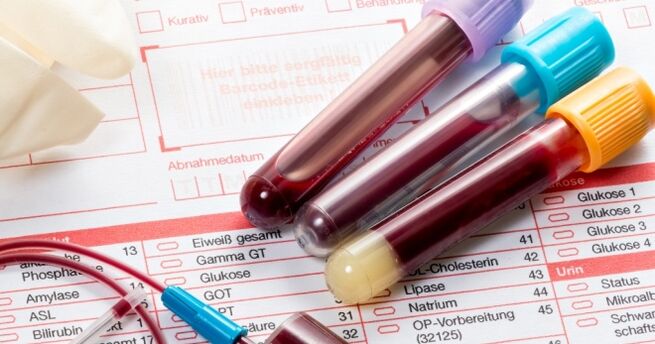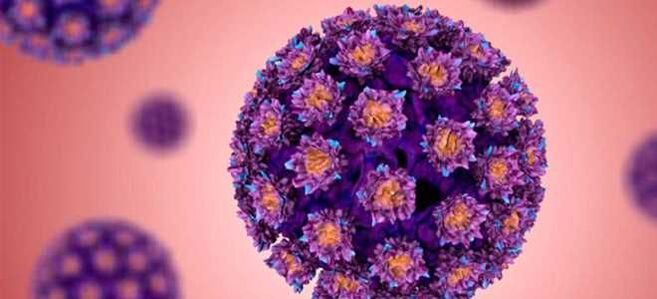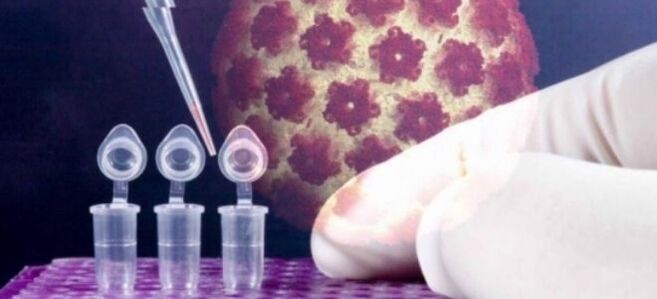
In the presence of symptoms and signs of the disease, doctors prescribe a number of laboratory tests to confirm the assumptions and make a diagnosis. In the list of appointments, patients can find an HPV test: what it is, why and when it is prescribed - not everyone can answer.
What is HPV?
The human papillomavirus, HPV, is a whole group of viral infectious diseases that are widespread. Scientists know more than 100 types of this virus, and not all of them are dangerous to humans. Most of them are unnoticed in the body for a long time, causing transmission. However, about 14 types of this virus cause oncogenic malignancies. During the diagnosis, doctors always pay attention to the type of HPV, its oncogenicity, which determines the additional measures and the nature of treatment.
Types of human papillomavirus
Papillomavirus is generally divided into types depending on the risk of developing oncology. Taking this factor into account, we distinguish three main groups of HPV:
- Not oncogenic- never cause malignancies.
- Low oncogenic riskmay cause cancer in certain circumstances: 6, 11, 42, 43, 44.
- High oncogenic risk- when infected with this type of HPV, it is difficult to avoid the development of malignancies. Oncogenic human papillomaviruses: 16, 18, 31, 35, 33, 45, 58, 59, 52.

How does the human papillomavirus spread?
Knowledge of the spread of papillomavirus may reduce the risk of infection. In practice, however, this is difficult to avoid. In the vast majority of cases, infection occurs with the onset of sexual activity: the main mode of transmission of the virus is through sexual contact. The transfer can also be done during a kiss when there are microcracks and scratches on the surface of the lips. You can also get infected if you break the rules of hygiene when walking in a public place:
- saunas;
- pool:
- baths;
- and even if someone else uses their toothbrush, towel, razor.
Infection can also occur if the baby passes through the mother’s infected pathways during childbirth. Experts do not rule out the possibility that the virus can be transmitted through contact: it is unstable, but it can maintain some activity.Factors that cause HPV infection include:
- early onset of sexual activity;
- a large number of sexual partners;
- sexually transmitted infections;
- decreased immunity.
Human papillomavirus symptoms
The human papillomavirus can be invisible in the body for a long time. The incubation period, according to experts, can last from 2 months to 2 years. The disease progresses imperceptibly: there are no clinical symptoms and the main diagnostic methods show the norm. Every third patient recovers within 6 to 12 months from the time of infection due to their immune system.
The clinical course of HPV damage in the body is reduced to the appearance of skin formations. Patients experience papillomas, warts and warts on their skin. Their localization may be different and corresponds to the site of entry of the virus into the body: genitals, hand surface, lips. These formations appear to be papillary outgrowths, sometimes resembling cauliflower externally. Outgrowths are painless, but can cause pain and bleeding with friction and injury.

Why do I need an HPV test?
After talking about the virus, let’s move on to information about HPV testing: what research is being done, how it is being done, and when it is being prescribed. First, it is noted that if human papillomavirus is suspected, the analysis will help to confirm or refute the hypotheses. This type of research has the following objectives:
- identification of high oncogenic risk HPV;
- confirmation / denial of the survival of a certain type of HPV;
- to assess the risk of cancer in patients with dysplasia of the epidermis of the cervix.
In addition to the stated reasons for the test, the HPV test (which is indicated above) can be detected in the following cases:
- Primary screening for cervical cancer in women over 30 years of age.
- Evaluation of the results of surgical treatment of intraepithelial neoplasia.
- A dubious result of cytological examination of gynecological smears.
What tests should I have for HPV?
There are several methods for determining the presence of papillomavirus in the body. In most cases, however, doctors resort to PCR. If an HPV test is required, patients will undergo this test directly. Various biological body fluids can be used as test substances:
- blood;
- urine;
- amniotic fluid (when diagnosing a disease during pregnancy).
When it comes to HPV testing, what it does and how it happens, the possibility of studying tissue should be noted. So during colposcopy, the doctor carefully examines the cervical mucosa. The presence of small papillomas on them is direct evidence of damage to the HPV body. For confirmation, a small piece of tissue is taken for examination under a microscope to rule out malignancy.
HPV diagnostic methods
HPV diagnostics is a set of measures designed to detect the presence and type of the virus. To this end, the following techniques are used:
- Digene test- modern precise method. It can be used to determine the concentration, type and oncogenicity of the virus in the body. The material needed for the research is scraping the mucous membrane of the urethra or vagina. It is often used in combination with cytology.
- Diagnosis of HPV PCR- a simple and affordable diagnostic method that is widespread. The substance used is the patient's blood or urine. It assumes the detection of traces of virus in the sample.
- Cytological examinationmicroscopic examination of the smear. The evaluation criterion is the presence of modified cells in the smear - dyskeratocytes and coilocytes.
- Detection of antibodies against HPV- helps to identify the virus at an early stage of infection. The disadvantage is that the concentration and type of virus cannot be determined.
- Histological examination - examination of a sample of the affected tissue to determine the type and oncogenicity of HPV.

Human Papillomavirus - How to Test?
Physicians will tell the patient in detail how the HPV test will be performed, if necessary, prior to the test, even when the referral is issued. The analysis algorithm may differ depending on the methods and test materials used. Preparing for research is very important. Proper implementation of all points of the preparatory actions will allow objective results of the analysis to be achieved and will eliminate the need for re-implementation.
Preparing for HPV analysis
Prior to HPV analysis, a patient must meet a number of conditions. In this case, the method of survey and the type of analytical material are decisive. It is represented by:
- blood;
- urine;
- swab from the vagina or urethra.
Depending on the type of biological fluid being tested, the patient will receive recommendations on how to prepare for the analysis the day before. It is the candidate's responsibility to fully comply with the preparation rules. This avoids false results and, in some cases, false positive results when the result indicates the presence of HPV in its absence.
HPV blood test
Speaking of performing an HPV test, it should be noted that in most cases, the patient’s blood is used for this. The test is performed on an empty stomach: 10-12 hours before the expected time of ingestion, the patient should not eat or drink plain water without gas. Alcoholic beverages, fatty and fast foods should not be consumed 2-3 days before the date of analysis. Only in this case will the blood test for HPV make it possible to obtain accurate test results.
Analysis of HPV smear
This method is more commonly used to examine fair sex. Before taking an HPV test on women, they should be prepared for this test. The physician introduces the patient in detail to all rules of preparation.The following important points can be highlighted in this process:
- An ointment is taken before the start of antibiotic treatment or 2, 5 weeks after the end of treatment.
- On the day of sampling, the cleaning of external genitalia with chemical hygiene products is prohibited.
- Do not take a shower or enter the suppository.
- You should abstain from sexual intercourse for a day before taking the substance.
- Ideal analysis in the middle of the cycle, during the period of ovulation is prohibited.

Decoding HPV analysis
Only a doctor can decipher the results of an HPV test correctly. The specialist evaluates not only the quantitative value of the indicators, but also the clinical picture and possible signs of infection. Getting a complete picture of what is happening will help you choose the right medications and effective treatment methods. However, it is important to consider the severity of timely diagnosis and treatment: the risk of developing malignancies increases with age.
Quantitative HPV analysis
If the HPV test is performed by quantitative analysis, decoding involves determining the concentration of the virus at the time of the test. This will help determine the right tactics for patient care. Real-time PCR (RT-PCR) measures the amount of HPV DNA in a test sample. This is required for continuous dynamic monitoring of a particular type of human papillomavirus.
However, even those who know what HPV testing is and how it can do it cannot decipher the results on their own. This should be done in conjunction with the patient's examination and other tests. During the evaluation, the experts will follow the following interpretation of the indicators:
- lg< 3- the risk of developing dysplasia is low;
- lg 3-5- clinically significant result, risk of cervical dysplasia;
- lg >5- high probability of dysplasia, possibly the initial stage of the disease.
Qualitative HPV analysis
This technique is used to perform high-oncogenic HPV testing. Helps identify HPV types 16 and 18. These forms of the virus often cause genital cancer in women, squamous cell carcinoma, genital warts, and cervical dysplasia. The detection efficiency of HPV DNA reaches 98%. The conclusion suggests an answer with an indication of each virus type. There are two possible outputs: found / not found.














































































